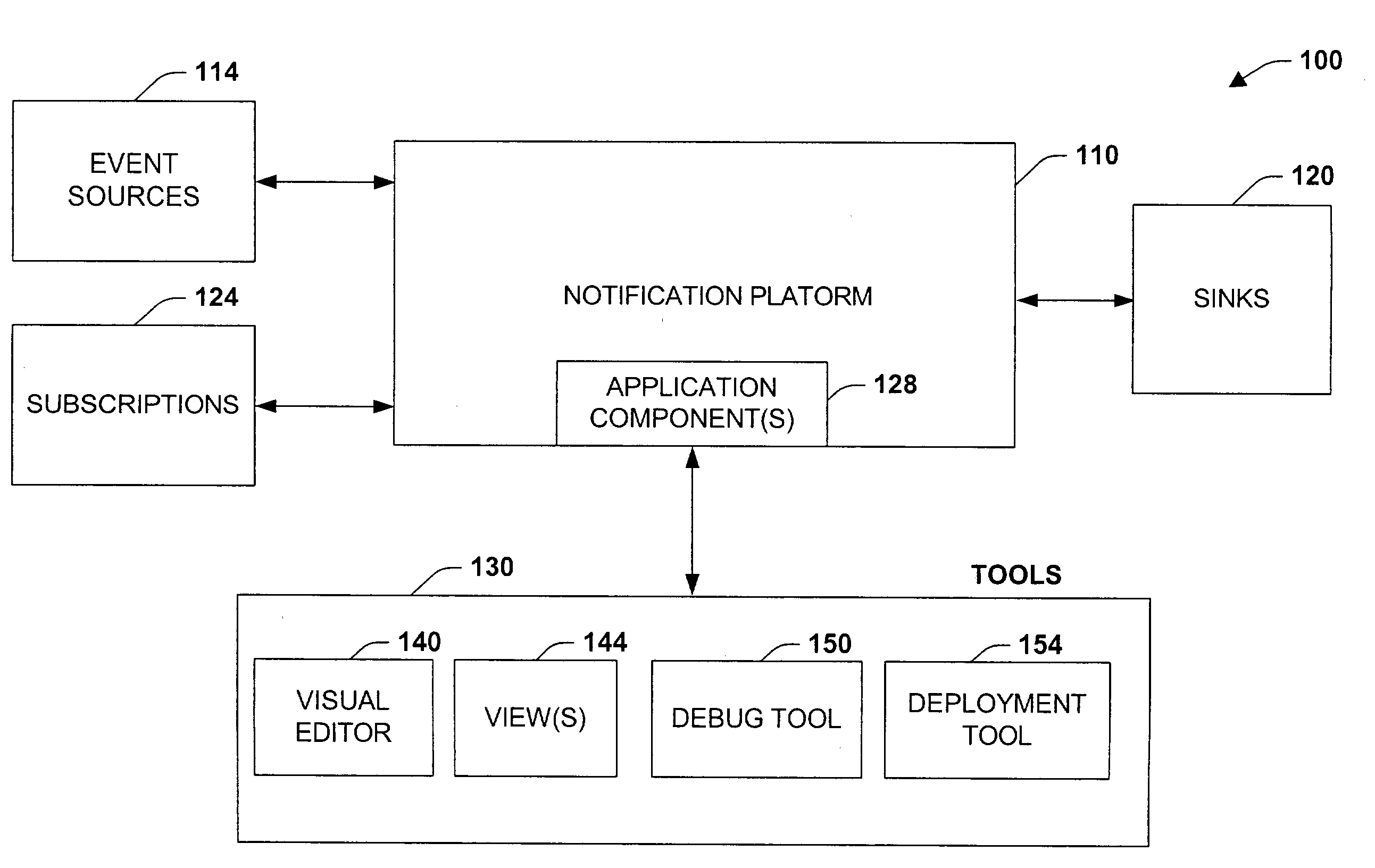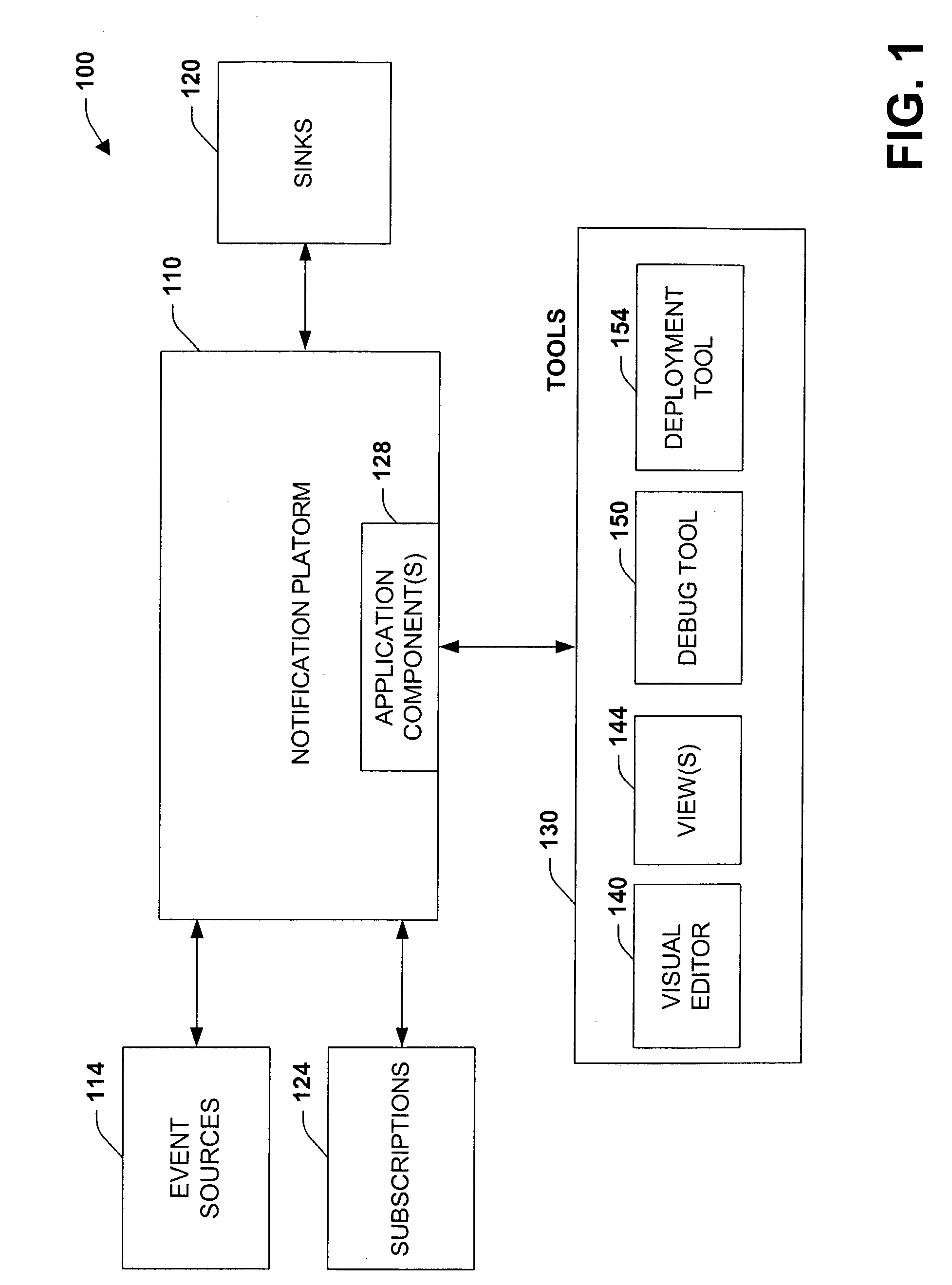User interface system and methods for providing notification(s)
a user interface and notification technology, applied in the field of computer systems, can solve the problems of inability to always be within close proximity of a computer, poor use of ad-hoc techniques in the design of information delivery systems, and difficulty in scaling conventional systems, etc., to achieve enhanced development experience, facilitate efficient design, debugging, management and deployment, and facilitate the effect of efficient design, debugging and managemen
- Summary
- Abstract
- Description
- Claims
- Application Information
AI Technical Summary
Benefits of technology
Problems solved by technology
Method used
Image
Examples
Embodiment Construction
[0033]The present invention relates to a system and methodology to facilitate development, management, debug, and deployment of a notification platform application. This includes providing various editor and display tools that interact with diverse components of the application in the context of a dynamic framework and development environment adapted to the nuances of the components (e.g., editor tool invoked in language of selected component, debugger tool providing debug options in various languages). Visual displays and interfaces are provided that depict the various components of an application along with the relationships between the components. Developers are then directed though the components of the application in a visual manner, wherein various editors can be invoked to design a portion of the application relating to the selected component. Other aspects include providing a debug environment for troubleshooting a notification application along with deployment options to in...
PUM
 Login to View More
Login to View More Abstract
Description
Claims
Application Information
 Login to View More
Login to View More - R&D
- Intellectual Property
- Life Sciences
- Materials
- Tech Scout
- Unparalleled Data Quality
- Higher Quality Content
- 60% Fewer Hallucinations
Browse by: Latest US Patents, China's latest patents, Technical Efficacy Thesaurus, Application Domain, Technology Topic, Popular Technical Reports.
© 2025 PatSnap. All rights reserved.Legal|Privacy policy|Modern Slavery Act Transparency Statement|Sitemap|About US| Contact US: help@patsnap.com



